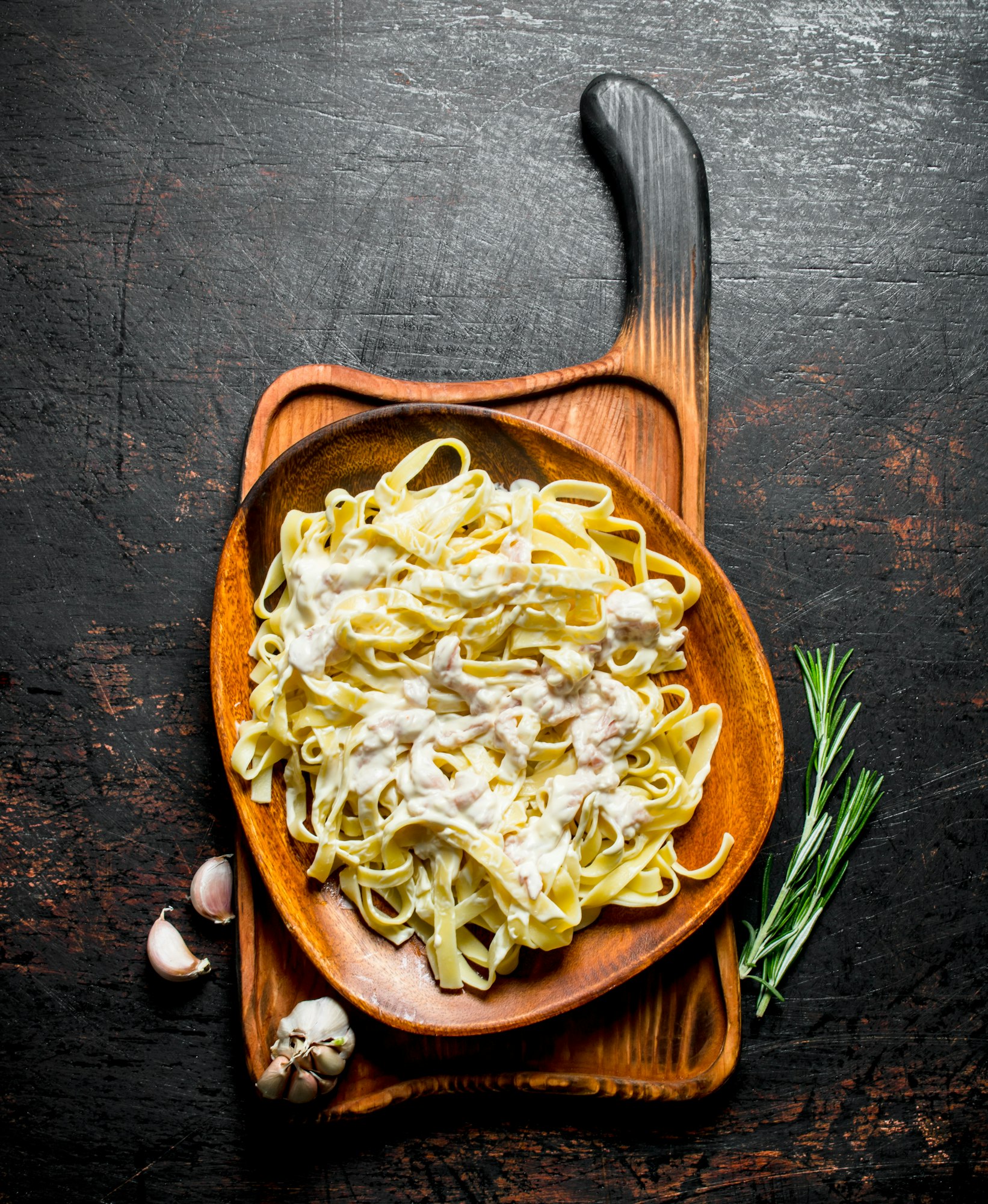What’s the Secret to a Rich and Creamy Carbonara with Homemade Guanciale?

Welcome to a journey through the savory landscape of Italian cuisine. Today, you are going to discover one of the most famous and loved recipes from the heart of Italy – Carbonara. This dish is a beautiful symphony of simple, fresh ingredients masterfully combined to create an incredibly rich, creamy, and flavorful experience. The secrets of its preparation lie in the quality of its main components, particularly the homemade guanciale, and the techniques used to meld them together. Let’s take a deep dive into the world of pasta and unveil these secrets.
The Ingredients: The Backbone of Carbonara
To appreciate the beauty of Carbonara, you need to understand its simplicity. The traditional Italian recipe primarily relies on five key ingredients: spaghetti, guanciale, eggs, pecorino cheese, and black pepper. With such a small ingredient list, the quality of each element becomes fundamental.
Also read : What’s the Best Way to Prepare an Earthy Wild Mushroom and Barley Soup?
The pasta used in this dish is usually spaghetti, though rigatoni or fettuccine can also be employed. The pasta must be cooked ‘al dente,’ which means it should still have a slight bite to it, not too soft.
Guanciale, an Italian cured meat product prepared from pork jowl or cheeks, is another crucial ingredient. Its rich and slightly spicy flavor contributes significantly to the overall taste of Carbonara. If guanciale is not available, a good quality pancetta or smoked bacon can be used, though it won’t provide the same depth of flavor.
In parallel : How to Elevate Your Homemade Pizza with a Charred Broccoli and Sausage Topping?
The sauce for Carbonara is a creamy combination of eggs and pecorino cheese. The eggs, ideally free-range for the best flavor, provide the velvety texture, while the pecorino cheese, a hard, salty Italian cheese made from sheep’s milk, adds a tangy, savory note to the dish.
Finally, freshly cracked black pepper is liberally sprinkled on top, providing a bit of heat and aroma, perfectly balancing the rich, creamy sauce.
The Homemade Guanciale: A Flavor Powerhouse
While you can buy guanciale from a store, making it at home will take your Carbonara to the next level. This will entail salting a piece of pork jowl and letting it cure for a few weeks, then letting it air-dry. The result is a robust, flavorful piece of meat that will infuse your Carbonara with an unparalleled depth of flavor.
To prepare guanciale at home, you will need a high-quality pork jowl, coarse salt, and a blend of seasonings typically comprising black pepper, thyme, and fennel or chili flakes. The meat is buried in the salt and seasonings and left to cure in a cool, dry place for a few weeks. After curing, the guanciale is hung to air-dry until it becomes firm and aromatic, usually taking a few more weeks. Although the process is time-consuming, the result is worth every second of waiting.
The Sauce: A Perfect Blend of Eggs and Cheese
The creamy sauce in Carbonara is not made with cream. In fact, adding cream is viewed as a cardinal sin in Italian cooking. Instead, the sauce is a blend of raw eggs and grated Pecorino cheese, combined with the hot pasta water to create a creamy, silky texture.
The eggs should be at room temperature before they’re beaten with the cheese. This makes them more receptive to the heat from the pasta, which will cook the eggs lightly without scrambling them. The cheese should be freshly grated, which will melt smoothly into the sauce.
While stirring the hot pasta into the egg and cheese mixture, it’s essential to add a bit of the pasta water. The starchy water helps emulsify the sauce, creating a creamy and smooth consistency. This step has to be done off the heat to prevent the eggs from overcooking.
The Cooking Process: Where Timing is Everything
The cooking process for Carbonara is quick and simple, but it requires precise timing. The pasta is cooked in a large pot of boiling salted water until just al dente. While the pasta is cooking, the guanciale is crisped in a hot pan, then removed and set aside.
Once the pasta is ready, it’s quickly transferred to the pan with the guanciale fat, along with a bit of the pasta water. The heat is then turned off, and the egg and cheese mixture is stirred in, coating the pasta evenly and creating a thick, creamy sauce. The cooked guanciale is added back in, and the dish is topped with plenty of freshly ground black pepper.
The key to a successful Carbonara lies in the timing. The pan must be hot enough to cook the eggs lightly but not so hot that they scramble. The pasta must be added while it’s still hot so that it can cook the eggs and melt the cheese. This all has to happen quickly, so having all your ingredients prepared and ready to go is crucial.
The Final Touch: The Importance of Pecorino and Pepper
A generous sprinkle of freshly grated Pecorino cheese and a good dash of black pepper are the final touches to a perfect Carbonara. The cheese adds a salty, tangy note that contrasts beautifully with the rich, creamy sauce, while the pepper provides a bit of heat and aroma to balance out the flavors.
The Pecorino should be finely grated so that it melts seamlessly into the dish, and the pepper should be freshly ground for the best flavor. A good Carbonara is a delicate balance of flavors, and these final touches help to bring everything together in perfect harmony.
You now have the secrets to making a rich and creamy Carbonara with homemade guanciale. With the right ingredients, a bit of patience, and precise timing, you can create this classic Italian dish that will transport you straight to the streets of Rome. Enjoy the process, and most importantly, enjoy your meal!
Dishing Up a Perfect Carbonara: The Final Steps
Now that you’ve prepared your homemade guanciale and have your other ingredients at the ready, it’s time to put it all together. Remember, timing is vital in making spaghetti carbonara, as the residual heat from the pasta and cooking water will gently cook the egg yolks to create a luxuriously creamy carbonara sauce.
Start by boiling your pasta in salted water until it’s al dente. While the pasta is cooking, fry the guanciale in a pan until it’s crisp. Reserve some of the fat in the pan, as this will lend an extra layer of flavor to your carbonara.
Once your pasta is ready, drain it, reserving some of the pasta water. This starchy cooking water is a key component in achieving the perfect creamy consistency. Quickly add the hot pasta to the pan with the guanciale fat, stirring to coat each strand.
Now, off the heat, pour in your egg mixture. The heat of the pasta will gently cook the eggs, transforming them into a rich and creamy sauce. If the sauce is too thick, add a little of the reserved pasta water to thin it down. Remember, you want the sauce to cling to the pasta, not pool at the bottom of the plate.
Stir in the crispy guanciale, making sure it’s distributed evenly throughout the pasta. Finally, season with a generous amount of freshly ground black pepper. This not only adds heat but balances out the richness of the other ingredients.
The Magic Ingredient: Guanciale vs Pancetta
One of the key elements to a perfect carbonara is the use of guanciale, a cured pork jowl that’s packed with flavor. However, it’s not always easy to find outside of Italy. A common substitute is pancetta, which is made from pork belly and has a slightly less intense flavor. While it can certainly be used in a pinch, it doesn’t quite replicate the unique taste and texture of guanciale.
If you can’t find guanciale or pancetta, regular bacon can be used. It’s worth noting, though, that the smoky flavor of bacon can alter the flavor profile of the dish. If you want to stay as true as possible to the traditional carbonara recipe, going the extra mile to make your own guanciale is worth the effort.
Conclusion: Master the Art of Carbonara
Pulling off a perfect carbonara might seem intimidating at first, but with the right ingredients and a bit of practice, you’ll be serving up plates of this delicious pasta dish in no time. Remember, it all starts with quality ingredients – from the homemade guanciale to the pecorino romano and fresh egg yolks.
The secret to the perfect carbonara lies in its simplicity. Each ingredient is given the chance to shine, from the salty, umami-rich guanciale to the creamy eggs and cheese, all balanced with a kick of black pepper. It’s a symphony of flavors that, when done right, is truly unforgettable.
So, grab your apron and get cooking. With this guide, you now have everything you need to make a truly authentic spaghetti carbonara. Buon appetito!
